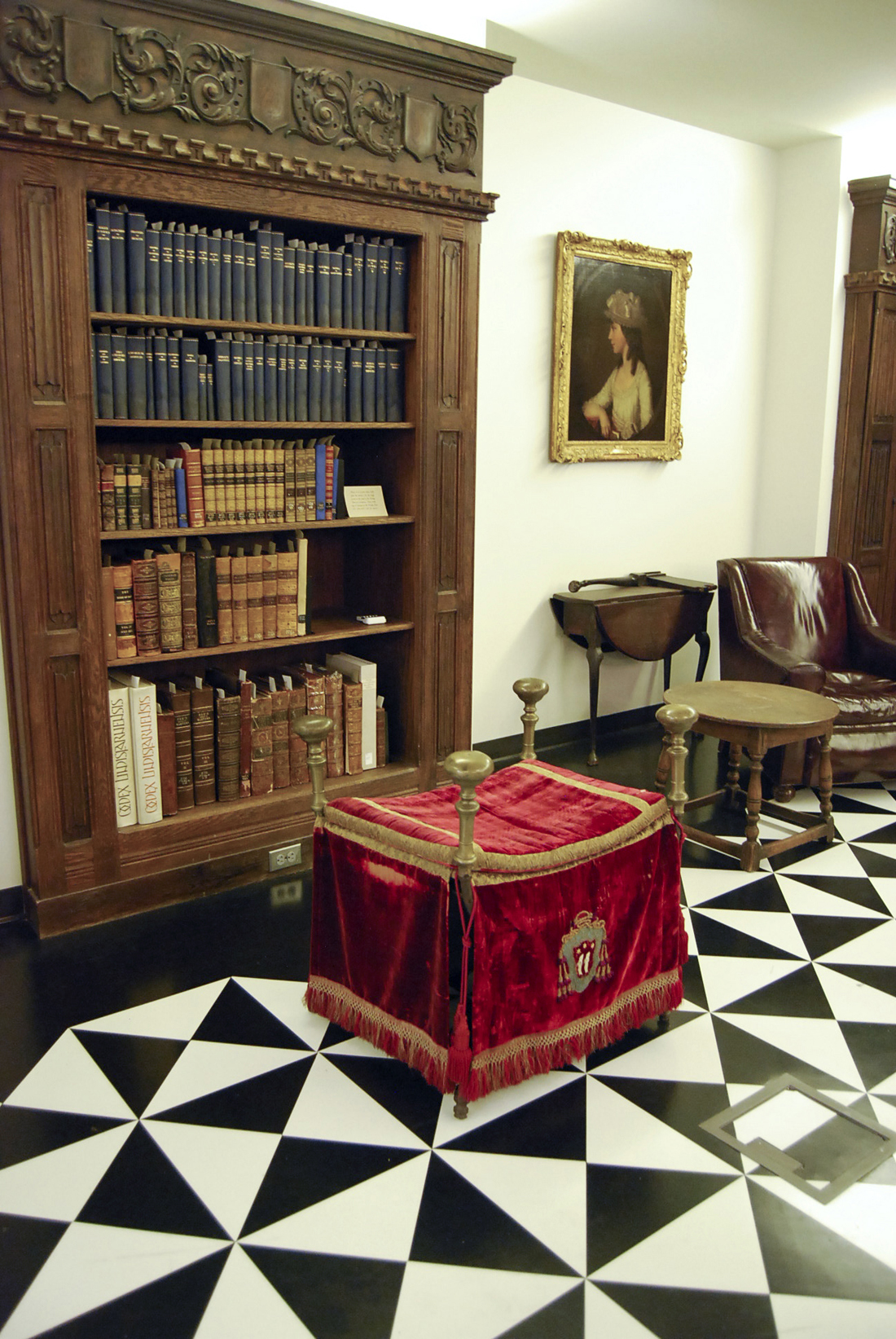Hatch Room shows and tells
In one of the quietest parts of the library lies the Hatch Memorial Library Room, where ancient wooden paneling and checkered floor with leather chairs and fragile books silently convey that no apple-chomping is done here.
The Hatch Room was gifted to Utah State Agricultural College in 1953. The donors, L. Boyd and Anne McQuarrie Hatch wanted a room that would house donated works of art and rare books. They wanted a place where students and other visitors could view the art that came from prestigious collections, listed in a history of the room available in Special Collections.
The current Hatch Room, on the lowest floor of the library, was relocated from its original home in the old Merrill Library. Though the current Hatch Room closely resembles the original, some changes were made in the relocation process, for which planning began shortly after the golden anniversary of the room in October 2003. It was completed around 2005 after meticulous care and expertise.
Some of the changes of the room were unavoidable, such as a change from the vaulted ceiling of the original, said Ann Buttars, curator or Western and Mormon Americana, who has worked in the Special Collections and Archives since she was student 40 years ago. Buttars said the original did add a greater ambiance to the room. The shorter ceiling also meant that the ancient Flemish tapestry which had hung on the wall could no longer be displayed, and is now being preserved in storage.
Another significant change is in the manner that visitors enter the room. Originally the entrance was through the oak door which, like its matching linen-fold paneling, came from England, circa 1550, and is rather small by today’s standards. Buttars said this shows the history of the times; people living in the original manor were shorter than today. The door was getting a lot of wear from being open and closed, so with the new location, a larger and more convenient door was put in.
The size of the old door is but one way in which the actual room shows history in addition to telling it. According to a pamphlet on the Hatch Room, USAC’s president in 1953, Henry Dixon, said, “the student of today and tomorrow may come to work in the intimacy of artistic beauty. He may use books six hundred years old … He may study firsthand the oil painting of an old Master.”
Buttars said the authenticity of the room, from the fireplace mantle, dated 1664, to the oldest piece of furniture in the room, the faldistorium from 1490 Italy, the rare books and the rare works of art combine to form an unusual experience for the visitor.
“The atmosphere is a wonderful piece, you walk into an old history library, bringing an old history feeling, taking you out of the hustle and bustle of the world today,” Buttars said.
The room has had a varied history over its more than half a century at Utah State. Originally, Buttars said, the room was a children’s reading room. When the rare books were added, it became regular meeting place for history seminars and graduate English courses, where the literature and other ancient documents added an increased academic and accurate aura to the classes.
Rare books, those donated by the Hatches as well as other books purchased by the university and from various other collections are now stored in the Hatch Room, and are available to all students. Most are now listed through the catalog, Buttars said, and with the aid of one of the Special Collections librarians, can be viewed in the adjacent Tanner Reading room.
“There are a lot of books here that people really need to discover,” said Buttars. A thorough knowledge of the subject is not necessary to enjoy the ambiance of the collection. Buttars said her favorite book was the “Codex Lindisfarnensis,” which is a facsimile of the early gospels. She said it is exciting visually, despite the Latin text.
The books on the shelves contain a large amount of literature, including ancient volumes of Shakespeare, 109 continuous volumes of the Edinburgh Review, or the three volumes of Rollins History. Ranging from a large collection on natural history, such as the 11 volumes on British wildflowers, to the religious works, demonstrate the great variety. Buttars said one of the largest books in the collection is the “Description of Egypt”, which shows and studies hieroglyphs. The rare books are not limited to one discipline, but can be enjoyed by all students.
All students and faculty can visit the Hatch Memorial Library Room, which is open from 8 a.m. to 5 p.m. on weekdays.
– genevieve.draper@aggiemail.usu.edu

